9 Wood Doors Interior Ideas to Transform Your Home
Wood doors are more than just entryways between rooms—they’re design statements. Whether you’re renovating, building new, or simply upgrading, interior wood doors can dramatically affect your home’s ambience, light flow, and style. In this article, we’ll explore nine wood doors interior ideas to inspire your next project.
1. Classic Panel Doors for Timeless Elegance
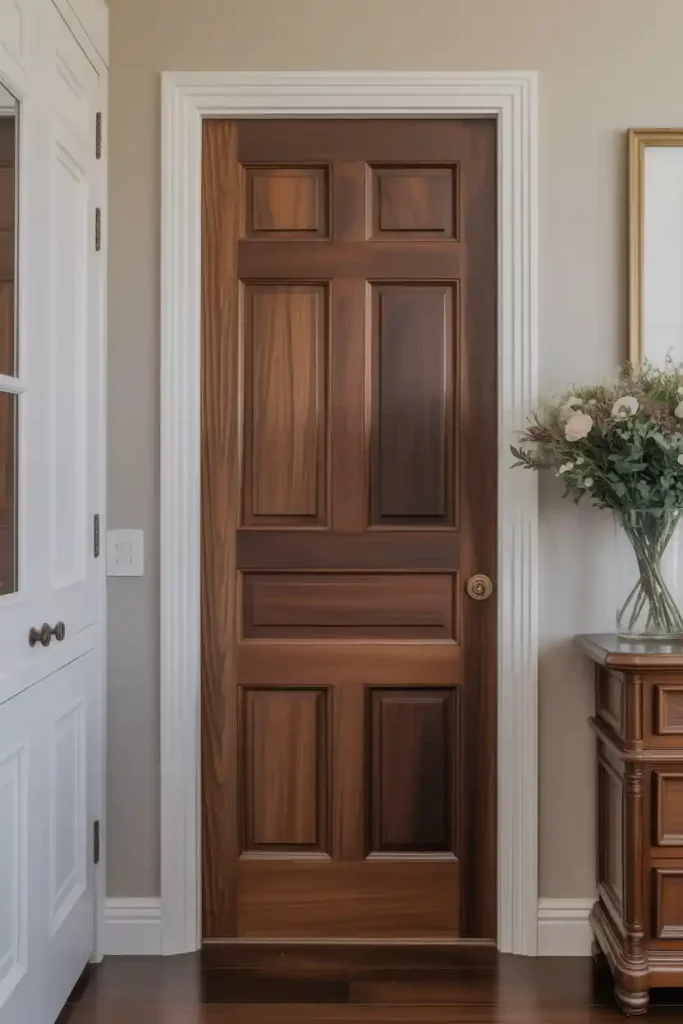
Classic panel doors—think raised or recessed panels—are a go-to when you aim for elegance. These doors often feature multiple panels (usually four to six), and work especially well in traditional, colonial, or craftsman-style homes. The depth and shadow in the panels add texture and richness without over-complicating the space.
Why choose classic panel doors:
- They match moldings and trim easily.
- The panelled structure is forgiving: small dents or damage show less.
- They fit multiple types of wood finish: walnut, oak, mahogany, or painted white.
If you want to explore more about pairing wood with traditional trim, you might like our article on Matching Wood and Trim Styles, which discusses how to choose moulding, baseboards, and door styles together.
2. Sliding Barn Wood Doors: Rustic Meets Modern

When space is tight—or you just love that rustic charm—sliding barn wood doors are dynamic. These doors slide on exposed tracks and often feature reclaimed wood, distressed finishes, wrought iron hardware—elements that echo countryside aesthetics.
Best uses:
- Between kitchen and pantry, to mask clutter.
- In bathrooms, when swinging doors aren’t feasible.
- As room dividers—say, between a home office and living room.
Want ideas for mixing rustic elements in modern interiors? See our post Rustic Design Elements You Can Use Today.
3. Frosted Glass‐Inset Wood Doors: Balancing Light and Privacy
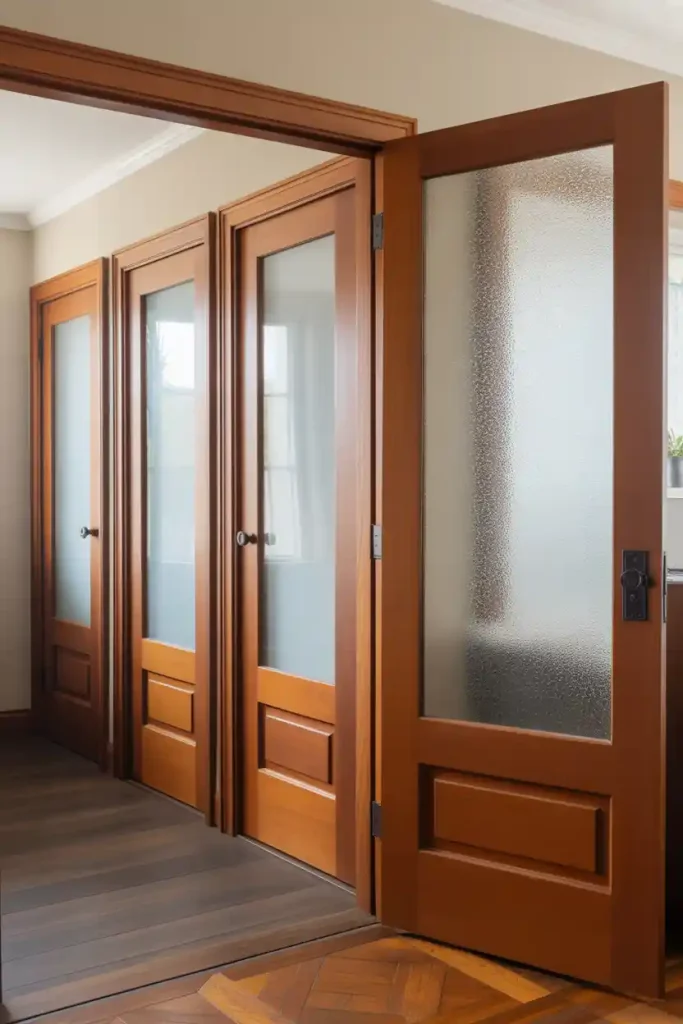
If your interior needs natural light but also privacy, wood doors with frosted or textured glass insets are brilliant. The glass panels allow light transfer, while frosted or obscure finishes prevent full visibility.
Tips to maximize impact:
- Use in rooms without windows—hallways, closets, inner offices.
- Combine with wood finishes that match your existing doors to maintain cohesion.
- Accent with trim or casing that draws attention to the glass detail.
This idea often works wonders in open concept layouts, letting light flow while still defining individual spaces.
4. Shaker Style Wood Doors: Clean, Simple, Versatile
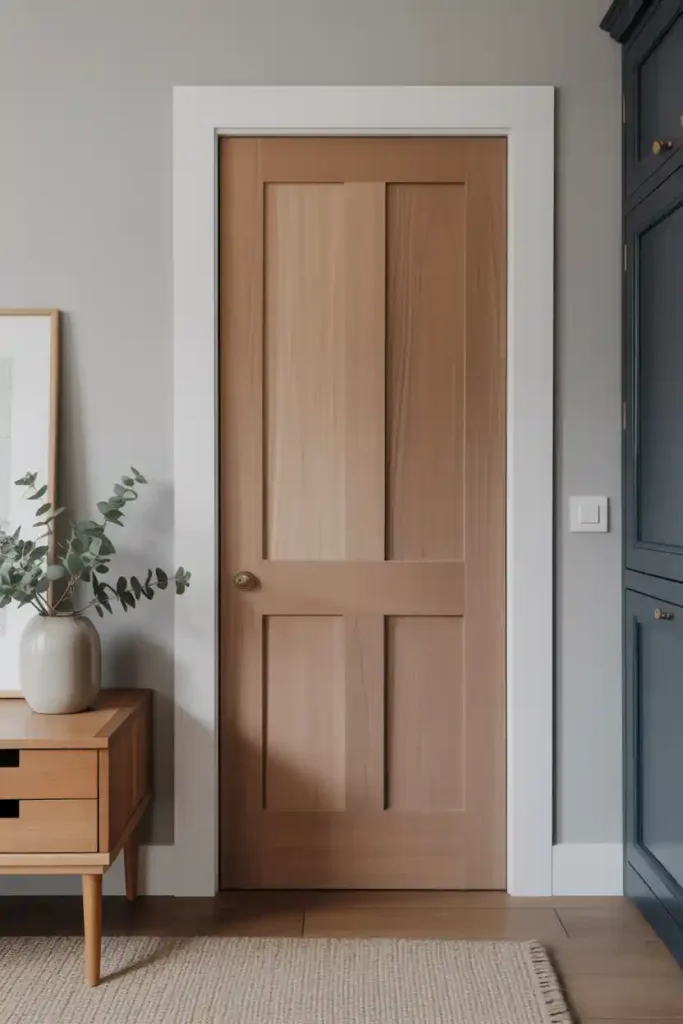
Shaker style doors are beloved for their clean lines: flat panels bordered by simple stiles and rails. They fit into everything from Scandinavian to transitional designs, and their pared-down aesthetic keeps the focus on materials—wood grain, finish, and hardware.
Why Shaker works:
- Less prone to feeling “outdated.”
- Complements minimal décor: hardware doesn’t have to be ornate.
- Easier to maintain—it’s forgiving in terms of small scratches or scuffs.
If you like the minimal look, check out our guide on Minimalist Interior Finishes.
5. Double Doors with Glass Panels: Drama and Openness
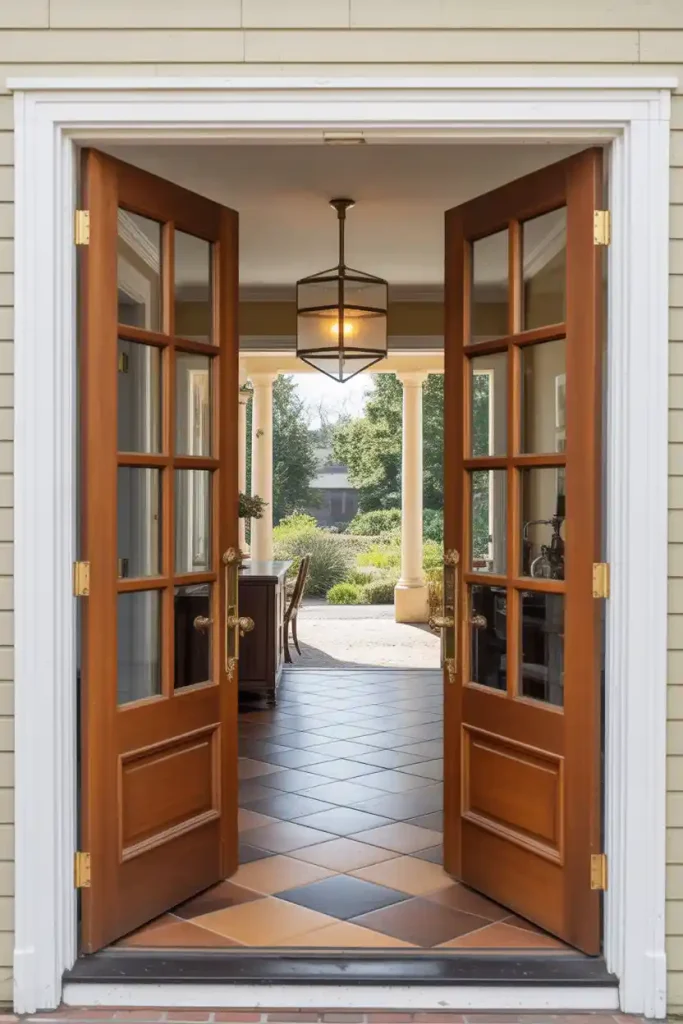
Double wood doors with glass panels—perhaps French‐style or full glass—bring drama and openness. They can transform a transition between two spaces into a visual focal point.
Where they shine:
- Between the foyer and living room.
- Separating a home office or study so you see through but still have a delineated space.
- As entrance to a sunroom or garden-facing extension.
Selecting the right hardware (hinges, handles) and glass style (clear, bevelled, leaded, frosted) can make all the difference.
6. Reclaimed Wood Doors: Eco-Chic and Unique
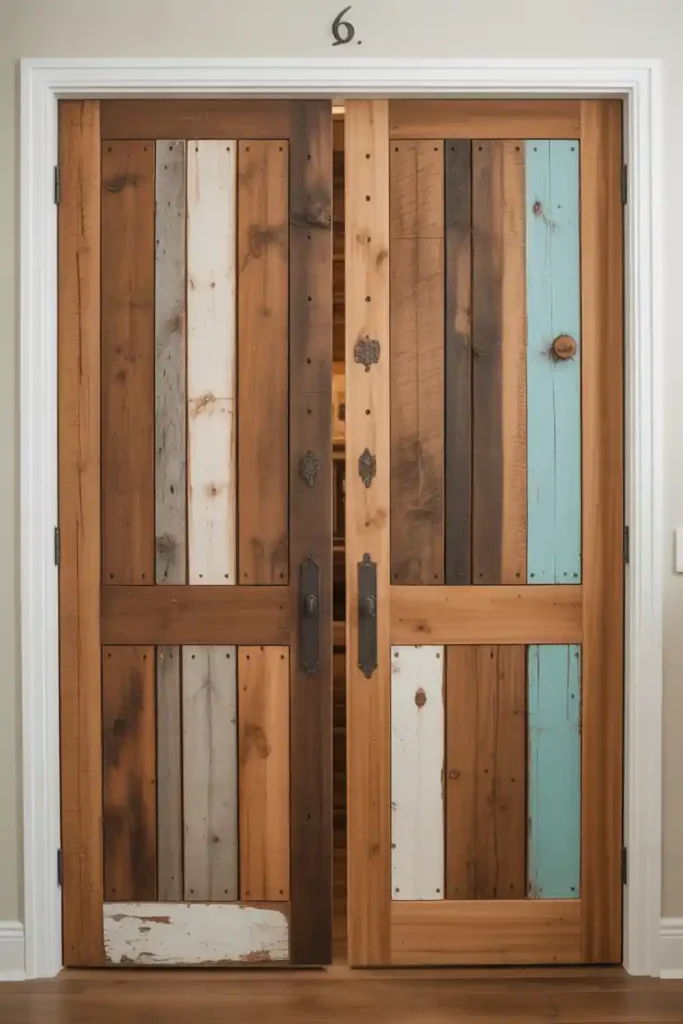
Reclaimed wood doors bring stories: old barn boards, salvaged beams, wood with character. Their imperfections—knots, nail holes, varied color—add warmth and personality.
How to use them well:
- Clean and treat thoroughly to avoid pests.
- Seal properly—natural oils or clear finishes often preserve character.
- Pair with simpler interiors to balance visual weight.
If sustainability is one of your values, reclaimed wood doors are an excellent choice that looks intentional, not “shabby.”
7. Flush Wood Doors: Sleek and Contemporary
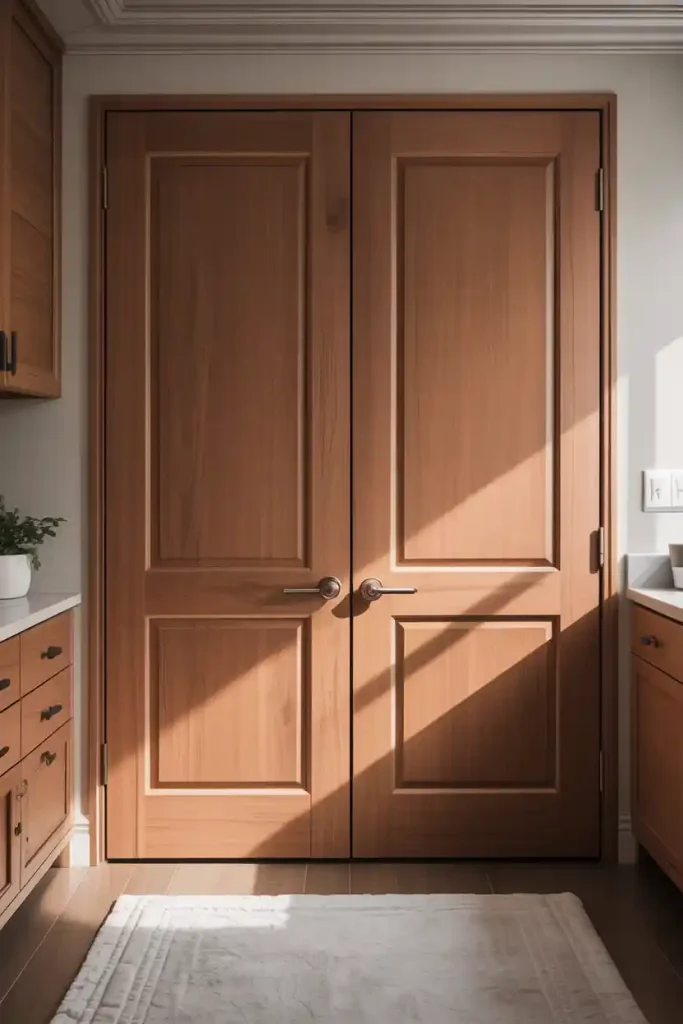
Flush doors are flat on both sides, often without panels or raised profile. For a modern, minimal interior, they deliver an unobtrusive, clean look.
Design tips:
- Use uniform wood veneer or laminate for consistency.
- Keep hardware minimal—concealed hinges, sleek pulls.
- Match door color/finish to baseboards or cabinetry to blur boundaries.
This style helps rooms feel larger and cleaner since you’re not breaking up walls visually.
8. Arched or Decorative Top Wood Doors: Elegant Curves
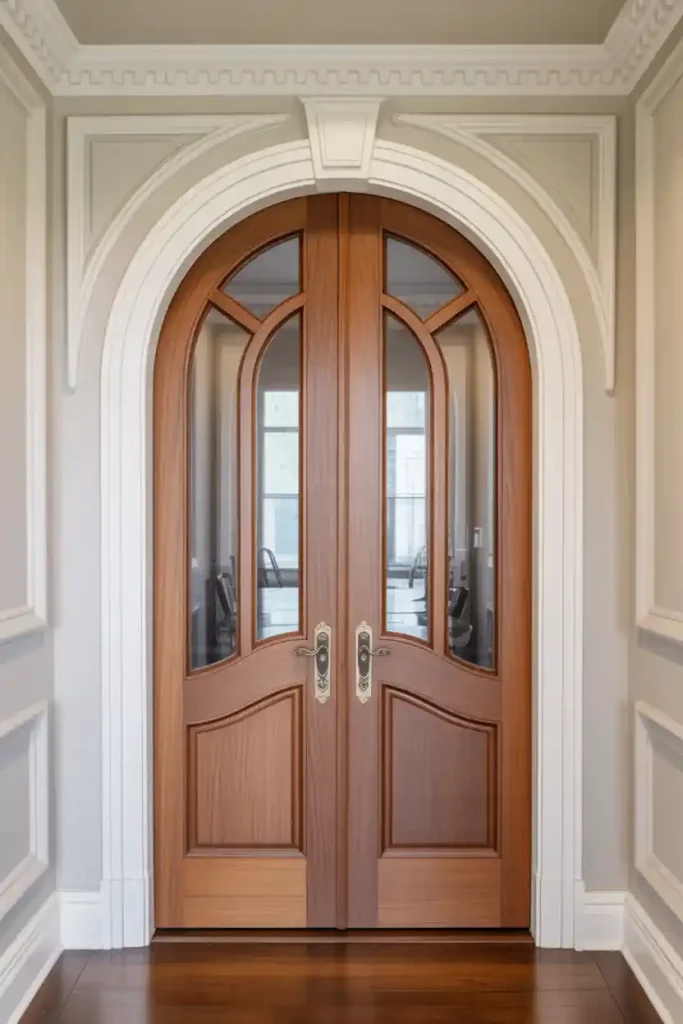
Straight lines are great—but curves bring softness and surprise. Wood doors with arched tops or decorative cutouts (e.g. a semi-circle or ogee arch) can elevate hallways and entries.
Best contexts:
- Period homes or renovated older houses where curved doorways already exist.
- As feature pieces in places like master bedrooms or home libraries.
- In conjunction with decorative trim, crown moulding above, or curved walls.
9. Two-Tone or Painted Wood Doors: Contrast and Color
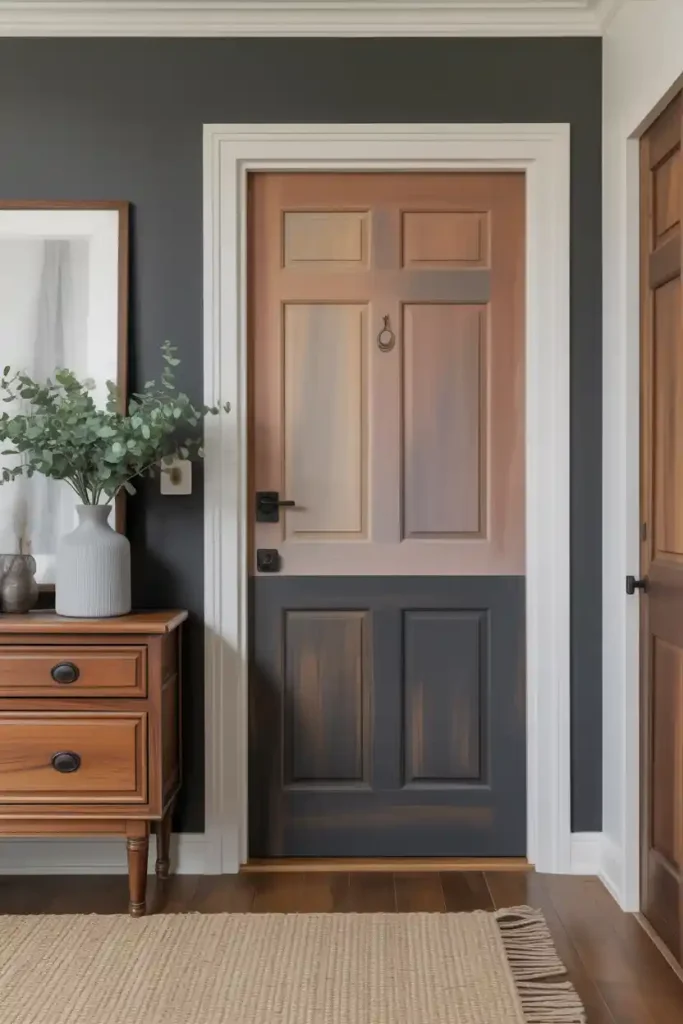
Wood is versatile—not just natural finishes. Painted doors (or two-tone wood doors: stained wood plus paint) can dramatically shift a room’s mood.
Ideas to try:
- Paint one main door (e.g. front door to living space) a bold color, keep others natural.
- Use dark wood stain for forest or walnut tones on the lower panel, paint upper section a lighter shade.
- Contrast hardware: matte black, brass, satin nickel to enhance the color/wood combo.
If you want inspiration for color palettes, our article Best Paint Colors for Interior Wood might be helpful.
Which Wood Doors Interior Idea Fits Your Home Best?
When deciding which of these nine wood doors interior ideas to go with, consider:
- Existing architecture & style. Victorian-era homes often suit panelled or arched top doors; modern homes lean toward flush or minimalist styles.
- Budget. Reclaimed wood or custom arched doors cost more; shaker or panel doors in standard sizes are more affordable.
- Light & privacy needs. Frosted glass or full glass panels allow more light flow; solid doors give privacy/sound control.
- Maintenance level. Natural, stained wood needs finishing and sealing; painted wood hides scratch damage more easily but may require periodic repainting.
- Cohesion across the home. While variety can add interest, too many wildly different door styles can feel disjointed. A unifying element—wood tone, hardware finish, or trim—helps.
Final Thoughts
Choosing the right style among these wood doors interior ideas can transform not just a room, but how you feel moving through your home. From the rustic charm of a sliding barn door to the crisp simplicity of a flush wood design, there’s an option for every style and budget.
Wood doors do more than separate spaces—they define transitions. Used thoughtfully, they enhance character, manage light, and even whisper something about your taste.
If you’d like help comparing wood species (oak vs walnut vs mahogany), or considering custom versus prefabricated doors, I’d be happy to pull together another guide.






